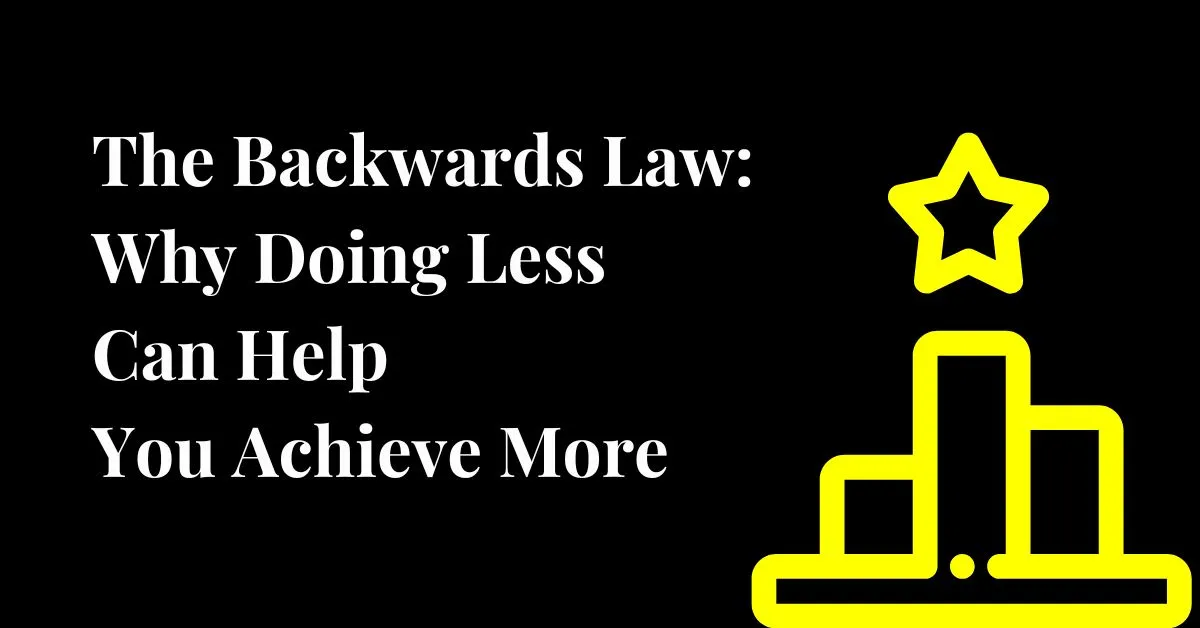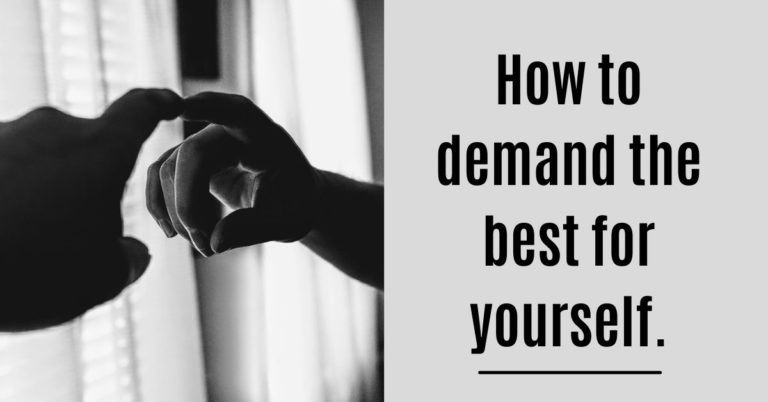The Backwards Law: Why Doing Less Helps You Achieve More
Have you ever found yourself stuck in a rut, trying the same old approaches to achieve your goals, only to end up frustrated and no closer to success?
What if there was a counterintuitive way of thinking that could help you break out of that pattern and finally make progress?
Enter the Backwards Law – a paradoxical idea that suggests doing the opposite of what you normally would can actually lead to success. It may sound counterintuitive, but there’s science to back it up. In this post, we’ll explore this phenomenon, how it works, and how you can use it to achieve your own goals.
Table of Contents
It’s a paradox…
The Backwards Law, also known as the Law of Reversed Effort, is a psychological concept that suggests that the harder we try to do something, the less likely we are to succeed.
This idea may seem odd, as we’re often told that success requires hard work and determination. However, this law proposes that our efforts can actually work against us if we’re not careful.
Its origins can be traced back to the work of psychologist and philosopher Alan Watts. In his book, “The Book: On the Taboo Against Knowing Who You Are”, Watts writes that:
“When you try to stay on the surface of the water, you sink; but when you try to sink, you float.”
This idea forms the basis of the Backwards Law – the harder we try to achieve a goal, the more we resist it, and the more likely we are to fail.
It turn our assumptions about success and effort on their head. Instead of focusing on working harder and pushing ourselves to the limit, it suggests that we should try doing the opposite – relaxing, letting go of our expectations, and allowing things to happen naturally.
This may seem like a passive approach, but it’s based on the understanding that our efforts can sometimes be counterproductive and that success often comes when we’re not actively striving for it.
Examples of the Backwards Law in action can be found in a wide range of contexts, from sports to business to personal relationships.
For instance, athletes who overthink their performance may find themselves making more mistakes, while those who relax and trust their instincts often perform better.
In business, companies that focus too much on their bottom line may end up losing sight of their purpose and ultimately fail, while those that prioritize their values and mission tend to be more successful.
And in personal relationships, individuals who try too hard to impress others may end up coming across as insincere, while those who are authentic and true to themselves tend to attract more positive attention.
Backed up by science…
The Backwards Law is not just a philosophical concept; it’s also backed up by science. There are several psychological concepts that help explain why doing the opposite of what we normally would can be effective.
One such concept is the idea of ironic processes, also known as the “White Bear Phenomenon“ This concept suggests that when we try to suppress certain thoughts or behaviors, we actually end up thinking about them more.
This is because our brain has a monitoring process that checks to see if we’re avoiding certain thoughts or behaviors. When we try too hard to suppress them, our brain sends us reminders of what we’re trying to avoid, making it more difficult to do so.
This idea is similar to the Backwards Law in that the harder we try to avoid something, the more likely we are to think about it or experience it.
Another psychological concept that supports the Backwards Law is the Yerkes-Dodson law. This law suggests that there’s an optimal level of arousal for achieving peak performance.
When we’re too aroused or not aroused enough, our performance suffers. This concept applies to the Backwards Law in that if we try too hard to achieve a goal, we can become too aroused or stressed, which can actually hinder our performance. On the other hand, if we relax and let things happen naturally, we may be able to achieve that optimal level of arousal and perform at our best.
That can be applied to our lives.
The Backwards Law may seem counterintuitive at first, but it can actually be a powerful tool for personal growth and achievement. Here are some practical tips for applying it to your life:
- Identify your goals – Before you can apply this technique, you need to know what you’re trying to achieve. Take some time to reflect on your goals and what you want to accomplish in your life.
- Identify your usual approach – Once you know your goals, think about your usual approach to achieving them. Do you tend to take an active, effortful approach, or do you tend to avoid certain actions or thoughts?
- Do the opposite – Based on your usual approach, try doing the opposite. If you tend to avoid certain actions or thoughts, try confronting them head-on. If you tend to be active and effortful, try relaxing and letting things happen naturally.
- Practice mindfulness – Mindfulness can be a helpful tool when applying the Backwards Law. By being aware of your thoughts and actions, you can more easily identify when you’re falling into your usual approach and make a conscious effort to do the opposite.
- Be patient and persistent – This technique may not work immediately, and it may take some time to see results. Be patient and persistent in your efforts, and don’t give up if you don’t see immediate success.
Despite its potential benefits, there are some common misconceptions that are important to address. One misconception is that the Backwards Law suggests that we should always do the opposite of what we normally would. This is not necessarily the case; it is more about being aware of our usual approach and being willing to try something different when our usual approach isn’t working.
Conclusion
The Backwards Law is a paradoxical concept that can be difficult to grasp at first. It may even seem counterintuitive, but the science behind it and the examples we’ve seen show that it can be an incredibly effective tool for personal growth and achievement.
By being willing to step outside of our usual approach, we can break free from old patterns and discover new ways of achieving our goals. We can find the courage to face our fears, take risks, and embrace uncertainty. We can let go of our need for control and learn to trust the process of life.
But perhaps most importantly, it reminds us that our thoughts and beliefs are powerful forces that shape our reality. By being mindful of our thoughts and intentionally choosing to think in ways that support our goals, we can create a life that is fulfilling, meaningful, and joyful.




